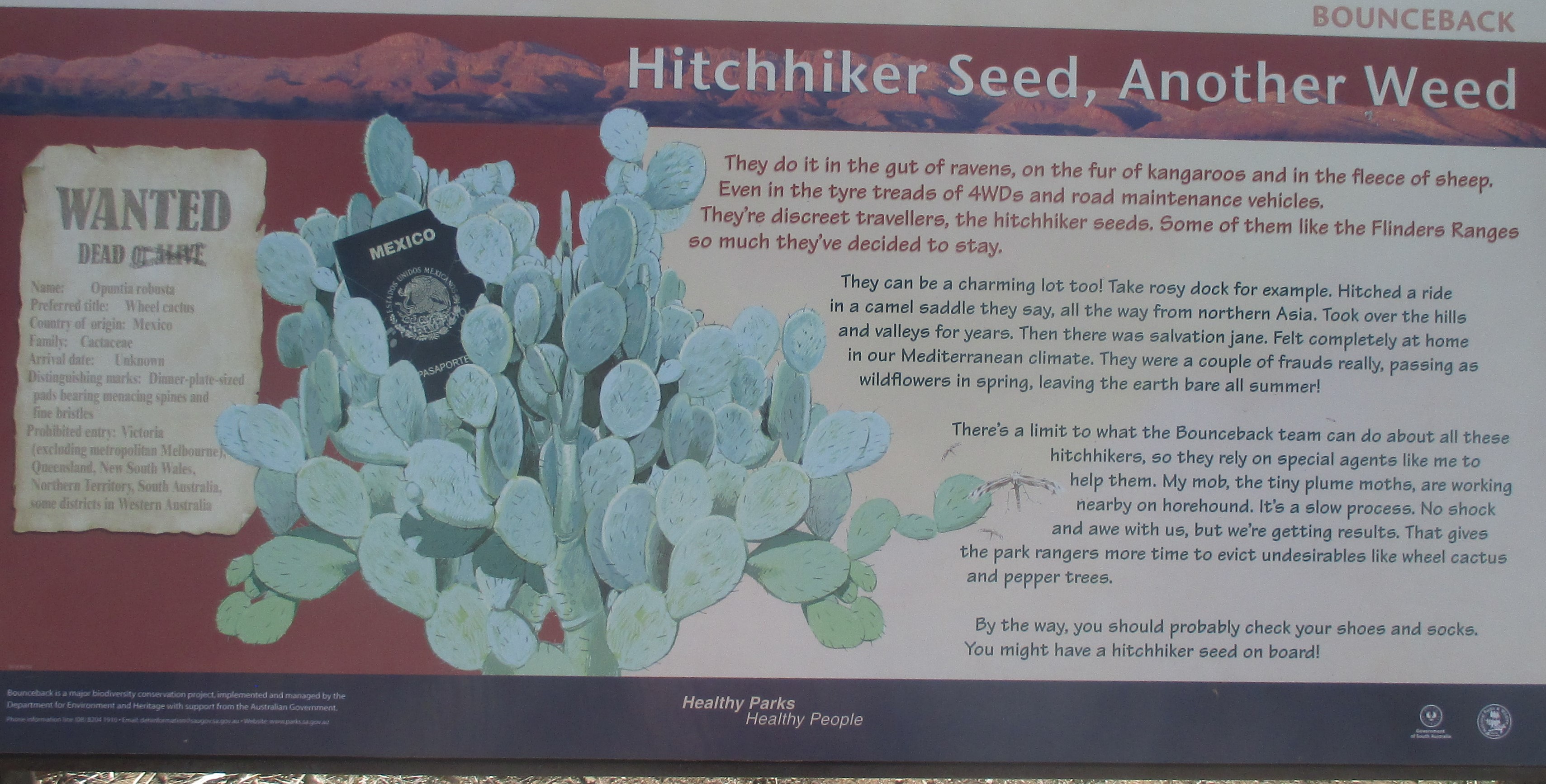A wheel cactus getting its hooks into the Australian outback
By Judy Evans
@JudyEv (351324)
Rockingham, Australia
August 10, 2018 8:58am CST
Isn’t it strange how you might see something or mention something and suddenly whatever it is turns up several more times within a short space of time. While we were travelling in the Flinders Ranges in South Australia, I spotted a cactus on the roadside. It stood out because of its pale green colour.
There was a notice nearby saying it was a ‘wheel cactus’ (Opuntia robusta). It originated in Mexico and has large round pads covered with spines and bristles. It is an unwanted invader and spreads through the droppings of birds, on the fur of local wildlife, and on the treads of tyres or shoes.
I came across the name again in an article in our local paper when we returned home. The oportioid cacti group are declared pests in our state. The most common of these is the prickly pear but the wheel cactus is also an undesirable alien. Australia has no native cacti which surprised me a bit.
I can’t find my photo of the cactus but here’s one of the sign which shows the plant.
7 people like this
9 responses

@peavey (16936)
• United States
10 Aug 18
I don't think I've ever seen that one, but we have cacti here, of several varieties. They're not close by, but within an hour of here, it's semi desert and the plant life changes drastically.
I am surprised you don't have native cacti there, but then again, Australia is different from most places.
1 person likes this



@JudyEv (351324)
• Rockingham, Australia
12 Aug 18
@just4him I read more about the prickly pear which is from the same family and it seems it was introduced as a potential crop by the First Fleet (first white settlers) but it quickly spread and eventually covered a million acres of valuable agricultural land. It was important as a food source for the insect that is used to produce cochineal. But that's the prickly pear. I don't know if this was important in that respect.
1 person likes this

@JESSY3236 (20426)
• United States
10 Aug 18
I have seen (not in person, just pictures) this cactus, but never knew the name of it.
1 person likes this
@JohnRoberts (109845)
• Los Angeles, California
10 Aug 18
Everything goes crazy in your country. I guess all that can be done is keep tearing it out and burning.
1 person likes this
@JudyEv (351324)
• Rockingham, Australia
11 Aug 18
@JohnRoberts I didn't know they'd singe off the needles. In drought times here the farmers will cut down mulga trees and the cows will follow along behind eating the leaves. I'd need to be pretty thirsty to tackle a cactus. I know they store water but I'd be a bit worried about some being poisonous.
1 person likes this
@JohnRoberts (109845)
• Los Angeles, California
11 Aug 18
@JudyEv That cactus is indigenous to our desert. There are uses for cactus. During heavy drought, ranchers will take a torch to singe sharp needles off so cattle can eat cactus which contains moisture. If you are wandering in the desert without water, you can cut off some cactus meat for the moisture and survive.
1 person likes this

@JudyEv (351324)
• Rockingham, Australia
11 Aug 18
We have a lot of desert and a lot of arid areas but still no native cacti.
@wolfgirl569 (114900)
• Marion, Ohio
10 Aug 18
It would be a pretty specimen plant to have.
1 person likes this
@Marilynda1225 (84406)
• United States
10 Aug 18
It is ironic how you see something or hear something and it turns up everywhere. I never heard of a wheel cactus but I don't live in an area common to cactus. It's interesting to read how that wheel cactus spreads.
1 person likes this
@JudyEv (351324)
• Rockingham, Australia
11 Aug 18
There are a number of plants that have spread from gardens and gone berserk. Some are very pretty when they flower (like Paterson's Curse) but they are a huge problem just the same.
@JudyEv (351324)
• Rockingham, Australia
12 Aug 18
I didn't know anything about it either till I read the sign.













